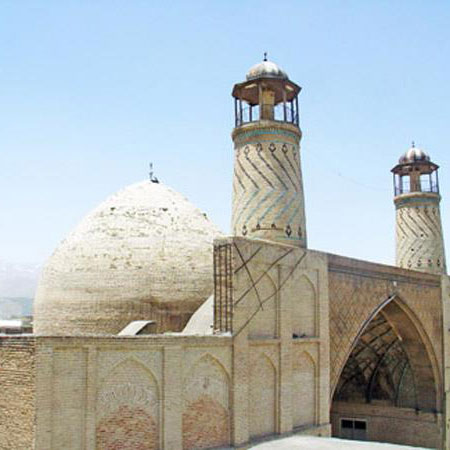Jameh Mosque of Hamedan
Close to the central square of the city and in the western part of Ekbatan Street, it is within the boundaries of the city markets. This mosque is one of the buildings of the Qajar period, and the date of commencement of its construction on the front of the Grand Ave recorded in 1253, so the mosque built at the same time as the Fatah-Ali-Shah Qajar government.
The mosque of Hamedan has a rectangular and porch design. The southern part of the mosque consists of a high porch made of simple bricks and tiles, with the tile of turquoise painted on the name of “Allah” and the name of five written. Its dome is large and two covers. This mosque has beautiful cellars.
Major developments in the mosque are related to Safavid, Qajar and Pahlavi times. In the archaeological excavations in various parts of the mosque, findings have been obtained that provide the following results: the historical layers obtained represent a part of the Parthian period, extending to this area from the city, and the mosque on the foundation of an old monument it was made.
The oldest source mentioned in the comprehensive mosque of Hamadan is the Bible related to the third century AH and the mosque is the center of the yard, with three verandahs around it. The main nave and the oldest part of the mosque on its southern front are the period Safavid and Qajar.
